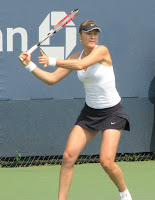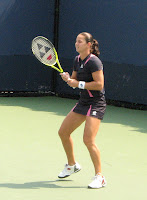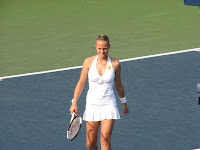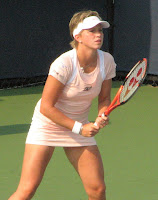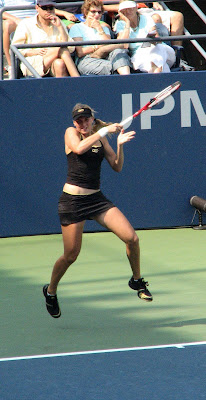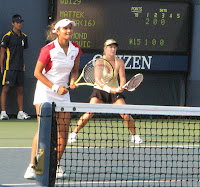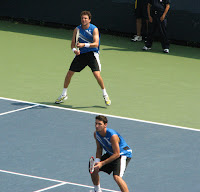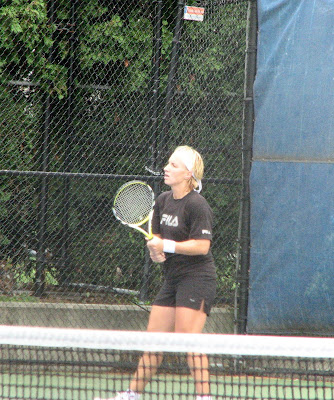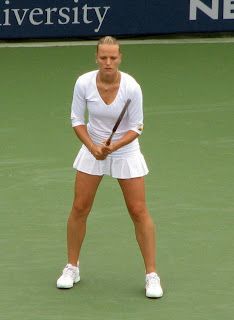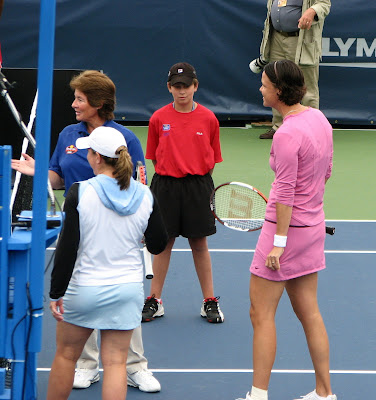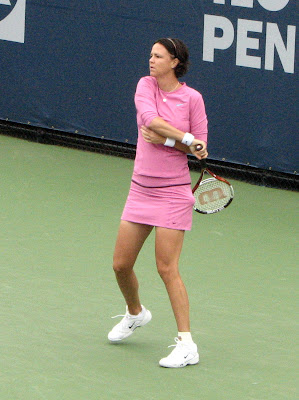Like Julia Vakulenko who easily beat Jelena Kostanic Tosic.
I had another sighting of Hungarian Agnes Szavay who took out Michaella Krajicek. It will be interesting to see not only how she does for the rest of the Open but in the fall season and beyond.
One of the other good things: shade in the Grandstand. Sure it came with a pole in the middle of the view but I was able to move over an aisle at the next changeover.
Fashion has been a hot topic during the first week. Nicole Vaidisova ditched the swingy dresses she usually wears for a tight tank and skirt combo in black with gold trim--complete with matching black sneakers. It was glam and probably better suited for a night match but Vaidisova does not quite have the status to be in a night match during the first week.
Maria Kirilenko (who sadly beat one of my favorites Katarina Srebotnik despite Srebotnik's cheering section) is still wearing the line Stella McCartney designs for Adidas. It was different from anything everyone else was wearing...

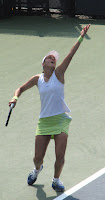
...except of course for Bethanie Mattek whose attire has received considerable press already. I missed her singles match against Peer, which she lost, but caught her doubles match with Sania Mirza against Jankovic and her partner Severine Bremond. I was not a fan of Mattek's outfit. It just didn't seem to fit right. But I also resented the fan in back of me who felt the need to basically call her a whore by saying--more than once--that it looked like Mattek had just gotten off the bus from Atlantic City.
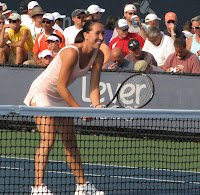
Oh yeah, I saw some men play too. New American sensation John Isner, injured Rafael Nadal practicing, and it's my last US Open Justin Gimelstob playing doubles with another American hope Amer Delic.
